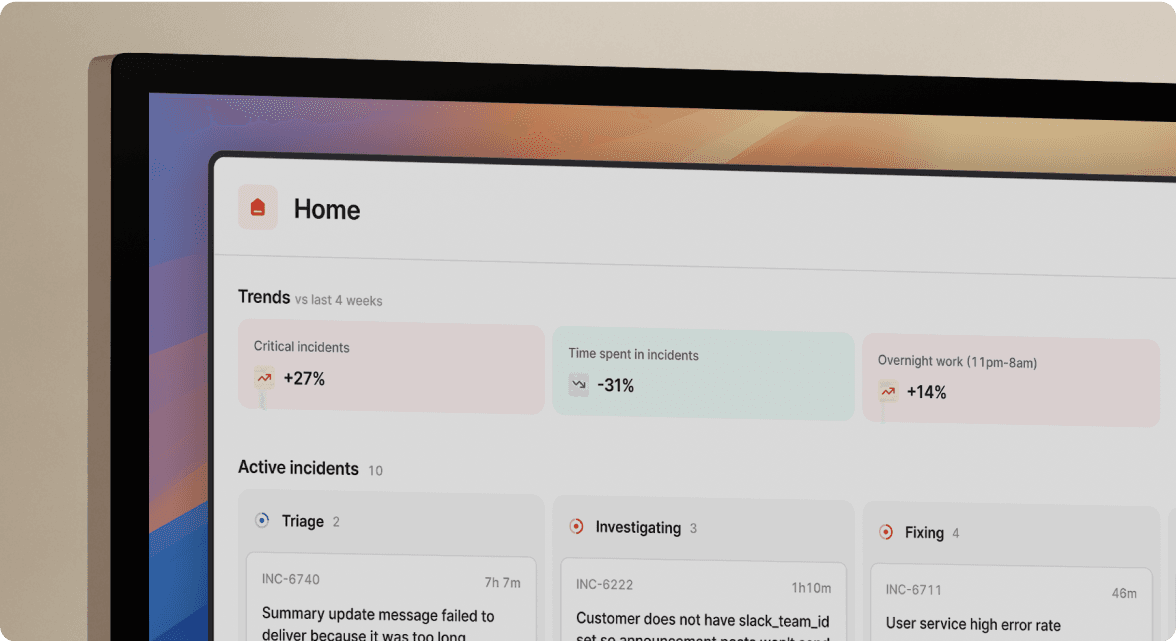Skyscanner is on a mission to help travelers plan and book their trips with ease and confidence. Whether it's using technology to make the complex simple or connecting travelers with trusted partners to provide honest and transparent solutions, they're determined to help everyone find the best offer for them.
The challenge
Regarded as one of the most well-respected B2C travel booking solutions on the market, Skyscanner has a lot of customer trust to build, maintain and protect.
So when it came to incident response, Skyscanner couldn’t afford to cut any corners or go with a less-than-stellar solution to deal with the myriad incidents, both internal and external, they were dealing with on a regular basis.
While their existing combination of Jira and Slack worked to an extent, they were left wanting more out of their incident response processes, especially as they continued to scale. Here’s what they were looking for:
- A solution that could replace and improve upon their existing response processes. They had an extensive wishlist that they couldn’t devote the time to build. So they needed a solution that could plug and play seamlessly into the complexities of their product
- They also wanted a solution to help address any customer-facing incidents, but they were finding this difficult to manage with their internal systems. Because of this, they needed a solution that was nimble enough to navigate a wide range of incidents, regardless of whether they were internal or external
- Incident communication was a known problem area. Skyscanner hoped to solve this issue through clear communication channels and sensible workflows that encouraged collaboration throughout the response process
- A solution that helped teams across the organization navigate the incident response process with confidence
- Sensible workflows that were driven by automation to help cut back on response times
- A communication-focused user experience to help foster collaboration
- An engineering team that worked like a partner to address pain points and fulfill feature requests quickly
The solution
An incident response workflow that was intuitive for incidents of all types
One of the top wishlist items for Skyscanner was an incident management solution that was both powerful and flexible enough to deal with incidents of all types, regardless of who or what they affected.
“The in-house response workflow we had was primarily built to manage incidents that had travel impact. But, as you know, incidents happen that impact various parts of the organization, not just your travelers,” says Paris.
By adopting incident.io, Skyscanner was not only able to improve their response processes across all affected areas, but they improved their communication as well, helping them stay organized and efficient.
“Having separate channels of communication is really important, especially since we deal with incidents of all types. So keeping incidents that affect our customers separate from everything else is a huge workflow improvement.”
A platform that encouraged use, regardless of technical background
For Skyscanner, incidents weren’t only the responsibility of engineers, they were a company-wide effort. But before adopting incident.io, Skyscanner didn’t have a simplified way to track non-technical incidents, leaving issues drawn out longer than needed.
“Issues would go unreported, leading to a lack of documentation or learnings,” says Paris.
But after switching to incident.io, these same teams now had a new and seamless way to manage incidents, thanks to an intuitive UI and workflows that guided folks through the incident lifecycle.
“One of the unexpected benefits of switching over to incident.io is that we’ve managed to get different groups within our organization to manage incidents,” says Paris.
“For example, teams that look after our data platform, employee enablement folks that manage our laptops and other equipment our company uses. These are teams that needed a platform to help them manage incidents. Now they’re empowered to set up incident channels and feel more confident knowing that there’s automation to help guide them the entire way.”
A customer-focused engineering team that’s responsive and consistently delivers value
With incident.io, Skyscanner not only found a solution that meaningfully improved their incident response, they also gained access to a customer-focused engineering team that was always ready and willing to move quickly.
“We’ve had many requests, like getting our Jira server connected, that I thought would take a while to acknowledge. But I made the request and by the next morning, it was up and running,” says Paris. “Same with Catalog. We had an initial conversation about creating one, and shortly after, we had something to play around with. In general, the amount of regular calls and contact we have with the team is just superb.”





